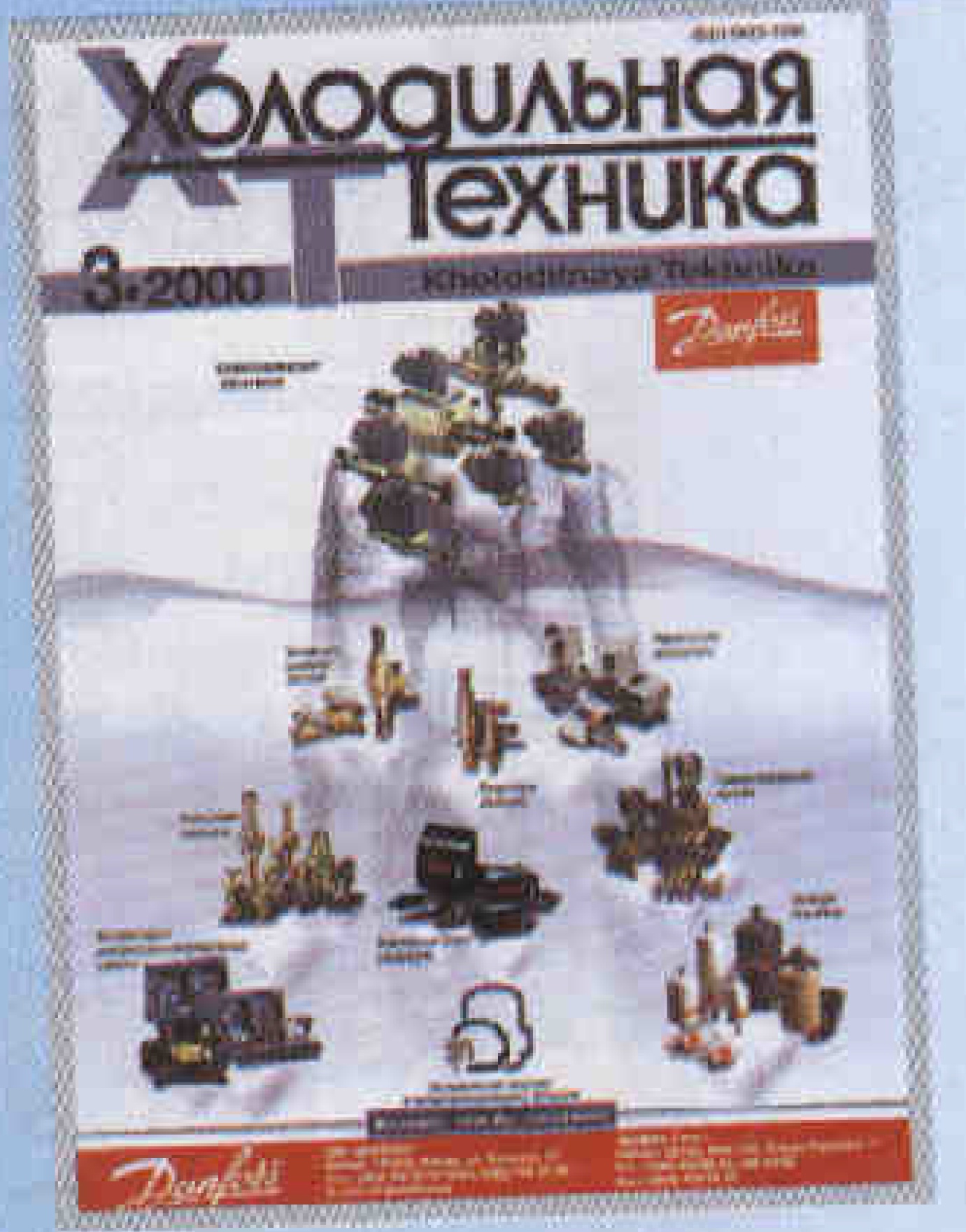Vol 89, No 3 (2000)
Articles
 1-5
1-5


Ammonia: properties and applications. Prospects for the 21st century
Abstract
The conference under this name was held on February 1, 2000 by the St. Petersburg State University of Low Temperature and Food Technologies (SPbGUNT) together with the International Academy of Refrigeration (MAX) and the Working Group "Properties of Refrigerants and Heat Transfer Agents" of the Scientific Council of the Russian Academy of Sciences.
Conference participants are representatives of industrial enterprises, firms and joint-stock companies, research and design institutes, universities, etc. Among them are the Odessa State Academy of Refrigeration (Ukraine), the Institute of Energy Problems of the National Academy of Sciences of Belarus, Giprorybflot (St. Petersburg) , Moscow State University of Engineering Ecology, Moscow Plant "Compressor", Astrakhan State Technical University, Head Office of the Maritime Register of Shipping (St. Petersburg), Alfa Laval Company (Korolev, Moscow Region), Omsk State Technical University, CJSC "Bureau of Analytical Instrumentation" Khromdet-Ecology "(Moscow), Design Bureau-1 of the Power Engineering Institute named after. G.M. Krzhizhanovsky (Moscow), VNIHI (Moscow), NIIEM Moscow State Technical University. N.E. Bauman, Military Engineering Space Academy. A.F. Mozhaisky (St. Petersburg), St. Petersburg GUNPT and others.
 6-7
6-7


Ammonia is an environmentally friendly refrigerant
Abstract
At the end of the outgoing century, a significant date remained unnoticed - the 250th anniversary of the discovery of ammonia. Ammonia began to be used as a refrigerant in 1859, when F. Carré patented an absorption water-ammonia refrigeration machine. In 1872, David Boyle received a patent for the design of an ammonia compressor. The development of the ammonia compressor industry, however, is more associated with the name of Karl Linde. In 1876, his first ammonia compressor appeared, which worked in Trieste until 1908. By this period, ammonia was already widely used in the technique of artificial cold. Thus, out of 57 refrigerated ships that transported meat by sea to the UK, 14 used air refrigeration machines, 27 - carbon dioxide and 16 - ammonia.
In Russia, stationary refrigeration machines for industrial use began to be produced by the Felzer factories in Riga and Franz Krull in Reval. The Felzer plant in 1898 mastered the production of ammonia and carbon dioxide refrigeration machines. Since 1904, the Krull plant has been producing absorption refrigeration machines, and then switched to the production of ammonia and carbon dioxide compressor machines. Since 1912, the Felzer plant ceased production of refrigeration equipment, and the Krull plant was evacuated in 1917 to Moscow in connection with the war.
The equipment was unloaded near the plant "Kotloapparat", where since June 1920 (now the Moscow plant "Compressor") the production of ammonia refrigeration machines was revived. At the end of 1931, the plant produced the first Soviet ammonia compressor VP-230, developed by young designers V.P. Barmin and A.A. Gogolin.
In the 1930s, a new class of refrigerants appeared. They were synthesized from methane, ethane and other hydrocarbons by replacing hydrogen atoms with fluorine, chlorine and bromine. These compounds, known as freons, are odorless, non-toxic, fire and explosion-proof. In refrigeration technology, the areas of application of freons and ammonia are clearly divided.
 8-9
8-9


Refrigeration units: classification, technical supervision, equipment certification
Abstract
The Russian Maritime Register of Shipping (PC, Register) is a state body for technical supervision and classification as a classification society founded in 1913. The Register participates in the work of the International Maritime Organization, the International Organization for Standardization (ISO). Since 1969, PC has been a member of the International Association of Classification Societies (IACS), which includes 10 of the world's leading classification societies.
 10-11
10-11


Ecological and thermoeconomic analysis of the prospects for the use of ammonia in refrigeration equipment
Abstract
Ecological, thermal and economical analysis was used in the study of prospects far the use of ammonia in new generation of refrigeration equipment. This method uses new efficiency criteria based on the evaluation of minimum level of emission of greenhouse gases during production of cold. The conclusion ahout good reasons far the use of ozone safe refrigerants was made within the frame of systems approach the essence of which consisted in consecutive increased complication of the objects of investigations. The analysis has shown that even taking into account additional engineering measures necessary for ensuring a safe use of ammonia this refrigerant has no alternative from ecological and energy point of view.
 12-16
12-16


Alfa Laval plate heat exchangers
Abstract
The widespread use of plate heat exchangers as elements of refrigeration systems - evaporators, condensers - began during the energy crisis in 1976. By this period, as a result of laboratory studies carried out by Alfa Laval, correlation relationships were obtained that made it possible to reliably describe heat transfer and hydraulic characteristics of a two-phase flow in the channels of the heat exchanger. Already in 1984, plate heat exchangers began to be used in heat pumps and refrigeration systems.
 17-18
17-18


New MOX oil coolers: combination of efficiency and manufacturability
Abstract
The research and production company "Khimholodservis" together with the companies HOWDEN and SES International organizes the assembly production of ammonia screw compressor units. At the same time, Khimholodservis will manufacture a significant part of the components (oil coolers, oil separators, oil pumps, filters, etc.).
Naturally, their design and technical characteristics must meet world standards.
 19-22
19-22


Self-contained temperature recorder
Abstract
One of the main factors determining the quality and presentation of products is compliance with the required temperature regime during their transportation and storage. Therefore, during the entire cycle of product delivery from the manufacturer to the consumer, it is necessary to constantly monitor the temperature, especially when the products arrive at the warehouse after transportation, in order to find out their “prehistory”, i.e. possible violations of the temperature regime during transportation, and to identify hidden defects.
 29-30
29-30









